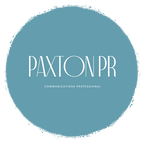|
Do you know the saying “it’s not what you say, but how you say it”? The tone of your customer communications is really important.
You might like to think about what tone you use in your writing or communications similar to how you’d think about decorating a room. Take a bedroom for example – you know that you’ll have a bed, some drawers, perhaps a bedside table and a lamp. How you choose to decorate the room around it will set the tone. The carpet, duvet and pillows, floor coverings, paint colour and the accessories you choose, will work together to give that room a particular look and feel. If you’re decorating a room for a teenage boy into skating, you’ll make different choices than if you’re decorating a bedroom for a 50-year married couple. The same goes with choosing the tone for your communications. Who you’re writing for and how you want them to feel about your communication is hugely influenced by tone. Tone is sum of the words we choose to use. It’s our sentence structures, the use of contractions or the use of jargon. Tone also includes whether we choose to use a passive voice (A scathing review was written by the critic) or an active voice (the critic wrote a scathing review), and who the communication is coming from (I, we, our, the organisation). The greetings we use play a part too. (Hello, Hi there, Hey guys...) as does the rhythm of our words, which is created by punctuation and sentence length. While the tone used in your writing is a personal choice, be wary of using capitalised or bold words in a sentence. They may not be well received since they convey an authoritarian tone and appear to be ‘yelling’ at the reader. A single use of either these can disrupt and potentially negatively impact the message that you’re trying to share. To make the point, think of a room that you’ve been in where there’s a colour used or an item of furniture that stands out — but for all the wrong reasons.
0 Comments
What’s a wiifm?
A critical part of communicating is to make it clear to your audience what’s in it for them. It’s just as important to make sure this message is clear, as it is to explain the reason ‘why’ you’re doing something. We’ve seen the importance of landing the ‘what’s in it for me?’ (or the ‘wiifm’) message increasingly during the Government’s Covid-19 vaccination drive. The ‘why’ is pretty clear — but what we’re hearing now are the wiifms. That is, by getting vaccinated the wiifm is being able to enjoy a kiwi summer, the end of harsh lockdowns, a way to protect our loved ones, and ultimately a return to some sort of normality. As fortunate as I am to be based in Wellington and now fully vaccinated, a traditional kiwi summer with my Auckland-based family, who I know I'll be protecting, is a wiifm that speaks strongly to me. Whether you’re selling a concept, a product or a service, nailing your audience’s wiifm is so important to help share your message |
What's top of mind?PR advice, musings and news. Content
March 2024
|
Site powered by Weebly. Managed by Looka

 RSS Feed
RSS Feed